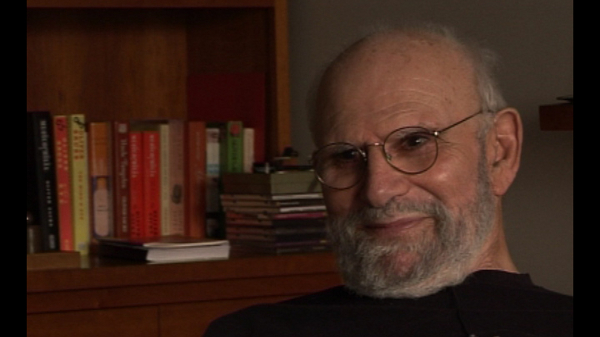NEXT STORY

Reception to Musicophilia
RELATED STORIES

NEXT STORY

Reception to Musicophilia
RELATED STORIES


|
Views | Duration | |
|---|---|---|---|
| 311. 'Take the eye if you must, but leave the rest of me alone' | 208 | 06:58 | |
| 312. The profoundest case of amnesia ever seen | 1 | 869 | 02:40 |
| 313. How Musicophilia expanded | 172 | 02:51 | |
| 314. The two pieces from 'Musicophilia' in the 'New Yorker' | 154 | 01:55 | |
| 315. Reception to Musicophilia | 144 | 01:33 | |
| 316. The piano is important once more in my life | 1 | 721 | 03:08 |
| 317. 'I have no excuse not to practise the piano!' | 475 | 02:11 | |
| 318. The events that led up to The Mind's Eye | 155 | 04:52 | |
| 319. Pulling together all the stories for The Mind's Eye | 129 | 03:20 | |
| 320. The final compilation for The Mind's Eye | 125 | 02:35 |


At that time... the book was already written, and two already written pieces from the book, which was then going through proof stages, and things, two pieces were offered to The New Yorker, or maybe one piece. I’ve forgotten.
[Q] There were two. There was the Tony Cicoria...
Oh, yes, two pieces were offered to The New Yorker. One was about Clive, the amnesic musician, and the other was about a... a surgeon who had never been too interested in music, certainly had no interested in classical music, who had been struck by lightning, and had a cardiac arrest and almost died, but when he was revived he had had one of these extraordinary near death experiences, out of body experiences. He seemed... he was hurled back by the bolt of lightning, and then he said he seemed to be floating forwards, and looking down, and he could see his own motionless body on the ground, and people, and someone trying to resuscitate and to do cardiac massage, and then he moved on and he was in a... a tunnel of light. And he described this experience, and he felt he was a different man afterwards, but in particular, he had a sudden, and still has, an overwhelming passion for classical music. He wanted to hear it, he wanted to play it, he wanted to compose it, and he continues to do all of these.
So these two stories then were published in The New Yorker, and then in '07 the book itself was published.
Oliver Sacks (1933-2015) was born in England. Having obtained his medical degree at Oxford University, he moved to the USA. There he worked as a consultant neurologist at Beth Abraham Hospital where in 1966, he encountered a group of survivors of the global sleepy sickness of 1916-1927. Sacks treated these patients with the then-experimental drug L-Dopa producing astounding results which he described in his book Awakenings. Further cases of neurological disorders were described by Sacks with exceptional sympathy in another major book entitled The Man Who Mistook His Wife For A Hat which became an instant best seller on its publication in 1985. His other books drew on his rich experiences as a neurologist gleaned over almost five decades of professional practice. Sacks's work was recognized by prestigious institutions which awarded him numerous honours and prizes. These included the Lewis Thomas Prize given by Rockefeller University, which recognizes the scientist as poet. He was an honorary fellow of both the American Academy of Arts and Letters and the American Academy of Arts and Sciences, and held honorary degrees from many universities, including Oxford, the Karolinska Institute, Georgetown, Bard, Gallaudet, Tufts, and the Catholic University of Peru.
Title: The two pieces from 'Musicophilia' in the 'New Yorker'
Listeners: Kate Edgar
Kate Edgar, previously Managing Editor at the Summit Books division of Simon and Schuster, began working with Oliver Sacks in 1983. She has served as editor and researcher on all of his books, and has been closely involved with various films and adaptations based on his work. As friend, assistant, and collaborator, she has accompanied Dr Sacks on many adventures around the world, clinical and otherwise.
Tags: Musicophilia, The New Yorker, Tony Cicoria, Clive Wearing
Duration: 1 minute, 55 seconds
Date story recorded: September 2011
Date story went live: 02 October 2012